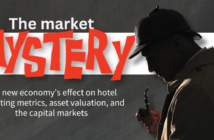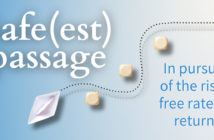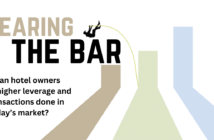Determining which underwriting metrics matter most to lenders in the current economic environment
Underwriting a commercial real estate transaction is both an art and a science. It’s an art, because there isn’t just one answer to every question and deal viability isn’t always clear. It’s a science, because capital providers can employ established rules of thumb, conventionally accepted market norms, and predictable correlations between metrics. For example, when a property’s debt-yield ratio moves up, inherently its loan-to-value ratio goes down. Let’s explore which metrics are most impacting financing right now.
 DSCR MAKES A COMEBACK
DSCR MAKES A COMEBACK
In today’s inflationary environment, an asset’s debt-service coverage ratio (DSCR), or the ratio of net cash flow to current debt payments, is once again in the spotlight. After the global financial crisis, the Federal Reserve implemented quantitative-easing mechanisms that artificially lowered long-term interest rates. When this intervention tactic is used to hold long-term rates lower, DSCR doesn’t carry as much weight in lender and other capital market participants’ credit decisions. However, the Fed’s recent activity – as well as the reaction of the bond markets to interest rate hikes – has pushed all major indices skyward. As a result, the absolute interest rate at which owners can borrow also has risen sharply. This magnitude of move in such a short period of time has sparked renewed attention on what was the most important underwriting metric pre-2008, DSCR.
 THE POWER OF RATINGS
THE POWER OF RATINGS
In the world of commercial mortgage-backed securities (CMBS), collateralized loan obligations (CLO) and other securitized products, rating agencies set the mood for the credit markets. Acting as gatekeepers, agencies curb overexuberance among debt providers by assigning a stress-test haircut to the transaction’s underwriting metrics. For example, if a property’s net cash flow is initially underwritten at $2 million, the final amount will be lower after the rating agency applies its risk-ratings calculation. How much of a trim depends on the asset’s type, location, historical cash flow, age, environmental factors, and sustainability of revenue, as well as sponsor quality. Considering assumptions, a typical flagged hotel in a tertiary market could expect the rating agency to cut revenue by 25%.
 IT’S ALL ABOUT SUSTAINABILITY
IT’S ALL ABOUT SUSTAINABILITY
Sustainability of cashflow has the most impact on financing decisions because lenders want to ensure an asset will be able to generate sufficient revenue to satisfy loan payments until maturity. During the past two and a half years, the market largely was manipulated by the pandemic and other forces, and most assets experienced unsustainable peaks and valleys in revenue. As a result, lenders and rating agencies are anchoring current underwriting on more normal 2018 and 2019 revenue numbers.
With inflation in full swing, prudent owners seeking higher revenues are increasing nightly rates. Higher interest rates lead to a lower DCSR on assets, which will continue to be key in light of renewed lender focus on this underwriting metric. A lower DSCR offsets potential overleveraging that might occur as revenue and cashflow ramps up. Interestingly, loan-to-values are largely unaffected by rate increases if the asset has sustained higher cash flows. This is because higher interest rates mean higher cap rates. Cap rate is the rate that when you divide it by cashflow gives you the value of the asset. If there is a higher cap rate on a property with a higher cash flow, it negates the impact on an asset’s value. Capital markets largely are financing hotel assets between 60% and 65% loan-to-values. Today the constrain is DSCR due to higher rate to service the debt. Taking all of this into consideration, the best underwriting approach for a hotel is to consider debt yield, loan-to-value, and DSCR in triangulation. In other words, calculate all three metrics and use the least of the trio to close the loan.
Whether you look at a commercial real estate transaction through the eyes of Monet or Einstein, it’s best to work with an expert intermediary. To eliminate the guesswork, choose an advisor who has years of experience and understands all facets of the market. Knowing how rating agencies, B-piece buyers, and lenders think and approach a deal can be the difference-maker for getting to the closing table.





